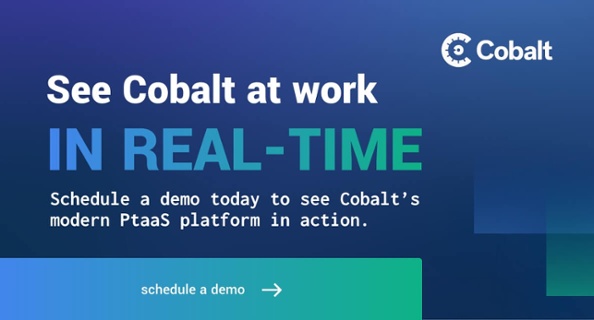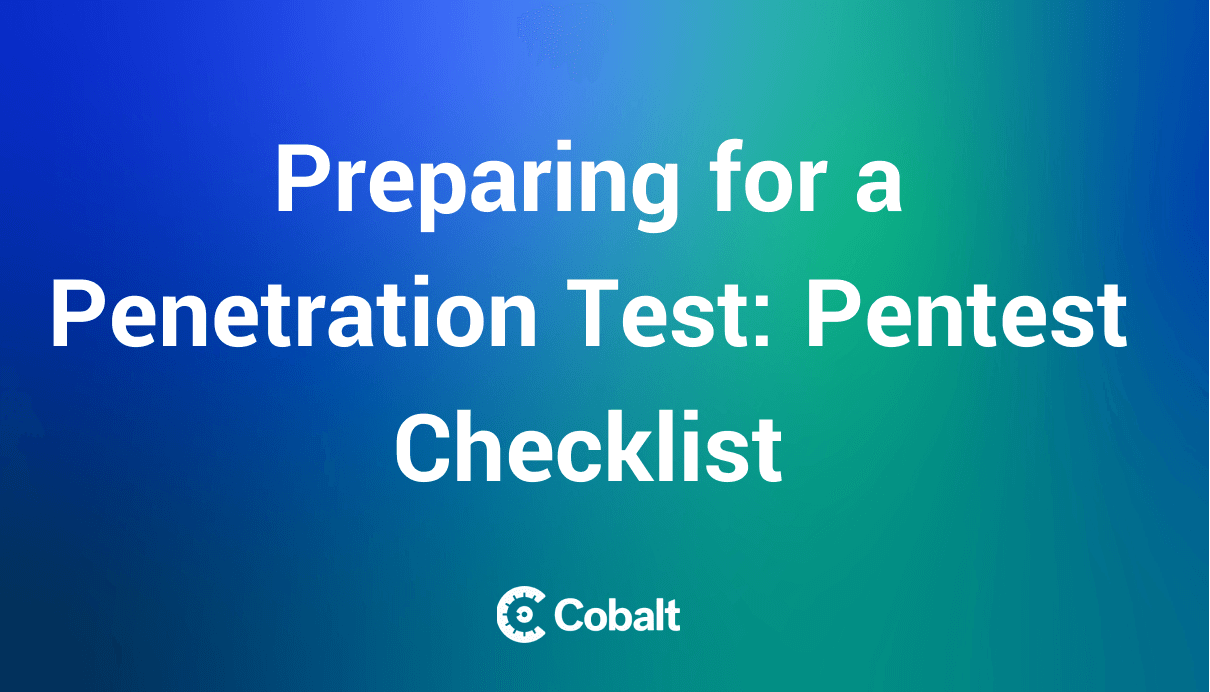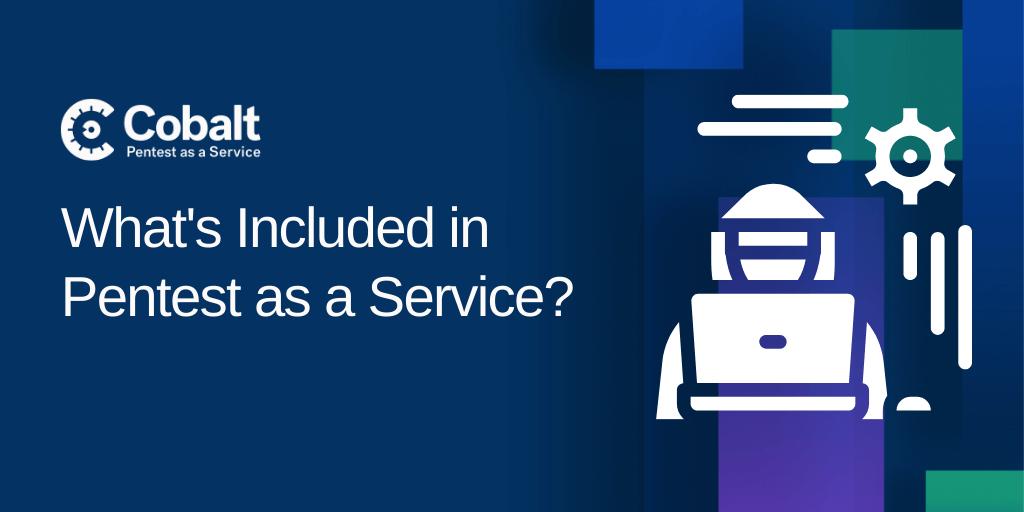Penetration testing or pentesting is the process of finding vulnerabilities in a company's systems by simulating a cyberattack. This helps businesses identify potential weaknesses and strengthen their security defenses.
No matter the size of your organization, security is your number one priority in today’s landscape. It’s crucial to make sure bad actors cannot penetrate your defenses. This is why penetration testing is so important. The question is, should you automate it or do it manually?
Here, we’ll discuss the differences between these two approaches and highlight the benefits of Pentest as a Service (PtaaS) powered by a SaaS platform like Cobalt.
What is Automated Penetration Testing?
Automated Penetration Testing involves using various tools and software to simulate an attack on a company's systems. Various automated tools exist. Two of the most prevalent are Dynamic Application Security Testing (DAST) and Interactive Application Security Testing (IAST).
Dynamic Application Security Testing
DAST analyzes running applications to detect vulnerabilities. DAST tools, often referred to as web application scanners or web vulnerability scanners, analyze applications from the outside in, simulating attacks from a hacker's perspective. These tools are often used to test web applications, APIs, and mobile applications. DAST tools can identify common vulnerabilities such as SQL injection, cross-site scripting (XSS), and others, making them an important part of an organization's security toolset.
Interactive Application Security Testing
IAST also analyzes running applications, but unlike DAST, IAST tools analyze the application from the inside out, injecting sensors into the application to gather data on how it behaves and interacts with the wider system.
IAST tools can detect vulnerabilities in real time as the application is running and provide detailed information on the cause of vulnerabilities. This can help developers quickly identify and remediate vulnerabilities during the development process. IAST tools can be integrated into DevOps workflows, making them a valuable resource for organizations looking to improve their security posture while maintaining development agility.
Automation Versus Aided Manual Penetration Testing
It’s important to understand the distinction between truly automated penetration testing and tests where pentesters use tools to assist them. The latter is still manual testing, even if it’s made more efficient by aids such as web application testing suites and network protocol analyzers.
True automated testing is a fast and efficient way to test for vulnerabilities and can protect against a variety of threats, but poorly configured automation may not catch everything, and you may face compatibility problems with some tools. This is why an expert pentest partner is so important when it comes to getting automated pentesting right and balancing it with human expertise.
What is Manual Penetration Testing?
On the other hand, manual penetration testing is a human-led approach to testing for vulnerabilities. In manual testing, experienced pentesters will attempt to attack the system with various tools and methods to find vulnerabilities.
Manual penetration testing can provide valuable benefits that automated testing cannot. While automated tools are useful in detecting common vulnerabilities, they often can't match the comprehensiveness and flexibility of human-led manual testing. Skilled testers can analyze a given system from different angles and evaluate its security posture from multiple perspectives, providing more nuanced insight into potential vulnerabilities.
Scanning tools often include false positives. So, while they offer ease of use to review a target system, they do not provide as much of an in-depth review as a manual pentest provides. Further, scanners will often miss complex business logic exploits, logic flaws, or other security flaws that a manual pentest can reveal.
However, manual testing requires a significant amount of time, resources, and expertise. Because of this, it can be quite expensive to conduct effectively. A proficient team of penetration testers can be difficult to find, and the rigorous nature of manual testing means that it often takes much longer to complete than automated testing. As such, not all organizations have the means to conduct manual testing at the level required for optimal security. Thankfully, Cobalt's PtaaS solution offers customers the ability to tap into a network of over 400 qualified testers.
The solution is to supplement manual testing with automated testing, creating a blended approach that combines the strengths of both methods. Automated testing can quickly detect simple, common vulnerabilities while manual testing can dig deeper and provide comprehensive coverage against more sophisticated threats.
Cobalt’s Agile pentest offering was created with this use case in mind. A pentest should be able to keep pace with your SDLC. An Agile Pentest focuses on a specific area of an asset or a specific vulnerability across an asset. The test is flexible and usually has a smaller scope than a comprehensive pentest.
Additionally, with Cobalt’s PtaaS platform, manual testing can be scheduled to run at regular intervals, ensuring that frequent testing is carried out without needing to sacrifice the thoroughness of the test as a scan would.
Ultimately, by making use of both approaches, organizations can optimize their security posture and cover all security vulnerabilities efficiently.
PtaaS: Manual Pentesting powered by SaaS Platform
Cobalt's Pentest as a Service (PtaaS) platform does just that. PtaaS combines the best of automated and manual approaches to provide comprehensive and efficient penetration testing services. Cobalt’s PtaaS offers pentesting in a more programmatic way with advanced scheduled, agile tests, and insightful reporting. Manual pentesting powered by skilled testers with the support of the PtaaS platform provides you with a deeper level of analysis and customizability. Cobalt PtaaS provides:
-
Customizable Scopes: Cobalt's PtaaS platform lets you define exactly what components and assets to test. This level of customization ensures you can target the most critical areas and maximize their efforts and budget.
-
Efficient Reporting: The PtaaS platform provides detailed reports that are easily understandable and actionable. These reports provide insights into vulnerabilities that have been discovered and how to remediate them.
-
Expert Pentest Team: Cobalt's PtaaS platform is powered by a team of expert pentesters who have extensive experience in performing manual penetration testing. These professionals have worked with a variety of industries and technology stacks, ensuring that they have the necessary skills to tackle any project.
-
Cutting Edge Technology: Cobalt's PtaaS platform uses advanced technology to automate and streamline the penetration testing process, allowing testers to be more efficient and accurate.
By leveraging this expertise you can:
-
Reduce security risk: Having a centralized view of your pentest data, scheduling retesting after remediation, and allowing developers to communicate directly with testers reduces security risk. On the PtaaS platform, you view the results of penetration tests and collaborate with expert pentesters to remediate vulnerabilities.
-
Drive DevSecOps Agility: By aligning pentesting to your SDLC, you can integrate it into development workflows such as Jira or GitHub, access the Cobalt API via webhooks, and initiate agile pentesting (smaller pentesting engagements with specific defined scope). Agile pentesting allows for more frequent and efficient testing during the development process.
-
Scale With Flexibility: Cobalt's PtaaS platform uses a repeatable and efficient testing process. You can purchase Cobalt credits in bulk and use them as needed, saving time and avoiding procurement issues. Plus, you can extend the reach of your security team by leveraging the Cobalt Core for smaller, ad hoc pentest engagements.
-
Gain Actionable Insights: The PtaaS platform provides actionable insights into vulnerabilities discovered during penetration testing, so they can prioritize remediation efforts and improve their overall security posture.
Between strategic automation and high-quality expert personnel, Cobalt PtaaS allows you to leverage the best of both approaches, without the expense and risk of building your testing team from scratch.
Combine the Best of Both Worlds to Keep Your System Safe
There’s no longer any need to choose between efficiency and a thorough approach to penetration testing. Cobalt's Pentest as a Service (PtaaS) platform combines the best of both worlds, allowing for deeper analysis and customizability while remaining efficient and scalable. Reduce your risks, drive DevSecOps agility, and scale with flexibility with Cobalt's PtaaS powered by a SaaS platform. If you’re ready to remediate risks quickly and innovate securely, contact us today to get started.








